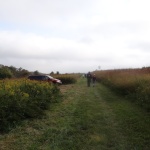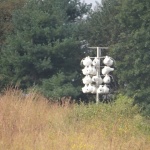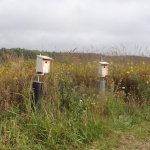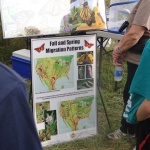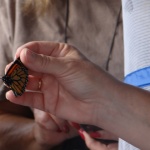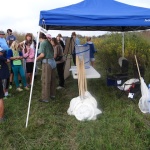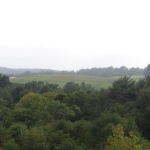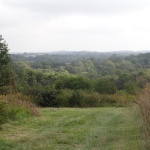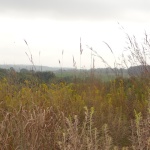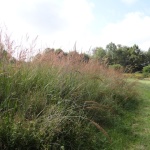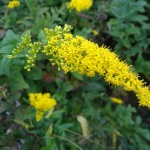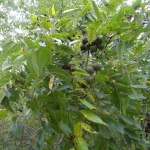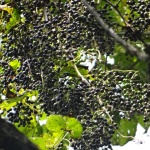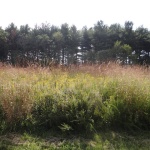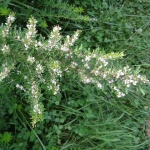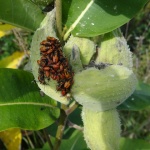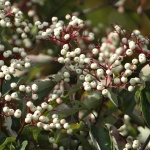Audrey Carroll was a well known individual (and a garden club member) who unselfishly donated her estate to Audubon. Today, the Audubon Society of Central Maryland maintains the 129 acre “Audrey Carroll Wildlife Sanctuary” located near Mt. Airy with around 3 miles of mowed trails. Quoting their literature: This “diverse habitat includes upland meadows, wetlands, woodlands, two streams and a pond” and “supports many varied species of birds (172 species to date c) and other wildlife as they make their home in the sanctuary or stop off during migration.” The sanctuary offers Audubon members and others opportunities to learn about and practice habitat preservation and enhancements such as reseeding meadows, reforestation, wildlife plot plantings and construction of bird and bat houses. The Central MD Audubon Society also maintains an inventory of the birds, butterflies, dragon and damselflies on site, engages in bird banding, turtle tracking, performs wetland surveys and studies native grassland habitats.
As in previous years, there has been a Monarch net-tag-release event and we attended to see what happens and to find out more about ACS. The weather was foggy and cool on September 22 and ths program drew a fair amount of people with elementary school age children. Audubon had a pavilion set up with educational posters and a naturalist who explained the life cycle and plight of the dwindling monarch population, the suspected link to weedkillers used on milkweed (the only larval food for Monarchs) and migration patterns. Almost all the Monarchs funnel down through the same pathways except for a much smaller contingent on the Pacific Coast. They all end up in the same area where they cluster on a certain pine species. THe naturalist said that the entire population last year was covering only .5 hectares down from over 20.
A coworker had been seeking to net Monarchs during the talk and returned with one. Sticky teflon-like tracker tags are applied to a particular area on the backside of a Monarch wing that resembles a mitt pattern. Monarch Watch maintains records on the tag numbers that are given to those who do the tagging, so when tagged Monarchs are found and reported (via the phone or email shown on the tag), the end point data adds to the world’s understanding of the Monarch’s migration pathways and patterns.
ALthough catch nets were provided, because the weather was cool, not many Monarchs were flying. There is an area where currents will lift them up the hillside once they were warmed and in flight. We were told to check for the thistle flowers, since those were the most attractive nectar plants in the sanctuary for Monarchs migrating south. We did see a few but they were moving quickly out of camera range. So, we explored ACS trails through the woods. There is definitely much to attract all sorts of wildlife throughout the sanctuary.
ACS Photos (click to enlarge)
- Purple martins would like the open area
- Note the map.
- To be stuck to wing in certain spot
- Nets that kids made a beeline for.
- Check these for Monarchs feeding, said Naturalist.
- Air currents would waft monarchs up from the area below on a warmer morning.
- One of the decision points.
- Audubon supports growing native grasslands for wildlife.
- I think those are honeybees on the flowers.
- These seedheads were very attractive to sparrow species.
- ACS had many black walnuts along the bottom land trail.
- Close up of food Bonanza
- The sun was finally peeking out.
- This bug feeds on milkweed sap and like Monarchs tastes bad to predators. It deforms the pods.
- Great for the birds!

